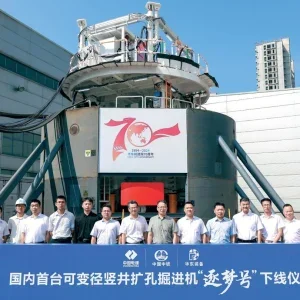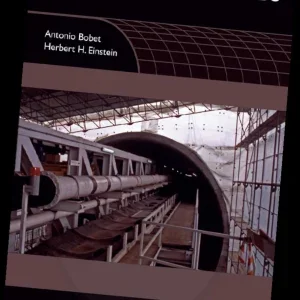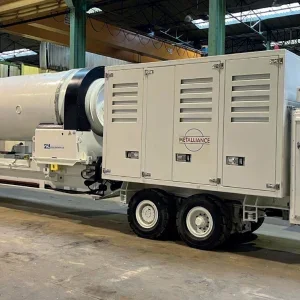The need for zero environmental damage, both in terms of the ground and to Copenhagen’s largely 18th century stock of timber piled buildings, has dictated the metro’s entire geotechnical design, spearheaded by UK Comet partner, foundations specialist Bachy Soletanche. With station boxes being opened just metres from historic buildings, top down excavation techniques were chosen to eliminate settlement. Secant piling forming the cofferdam sides offer minimal noise and vibration.
Comet engineers claim that top down station construction works out at roughly half the cost of conventional cut+cover, an economy further increased by using hard and soft secant piling. Every other pile is unreinforced and bored only half the depth of its hard neighbours. The lower section of this soft pile is formed by the simply injected grout needed to ensure a waterproof seal around the station box.
Excavating the network’s nine 25m deep ventilation shafts, several of which double as construction access, adopted a two stage approach. Upper sections of the 9m diameter shafts were formed with secant or sheet piling keyed into the limestone some 10m down. Lower sections were dug using NATM techniques: shotcrete, mesh and rockbolts lining the roadheader excavated shaft.
The fact that such deep shafts and station boxes are very dry even though timber piling nearby is waterlogged is due to a combination of accurate piling, an effective grout curtain around the holes and an impressive dewatering and recharge regime. This $16m system must ensure that, during dewatering, the water table varies less than 1m, keeping the oak piles wet. Its implementation has involved detailed 3D computer models of water flow around every station.
Scores of maps have been drawn to chart predicted water table movements beneath 5000 buildings. To ensure recharge water is of the highest quality, five $800 000 mobile water treatment plants have been installed at key excavation sites and there are dozens of stations to monitor groundwater.
No differential settlement has been recorded; the only building movement has been caused by disturbing a buried masonry bridge unexpectedly unearthed in a station box.






